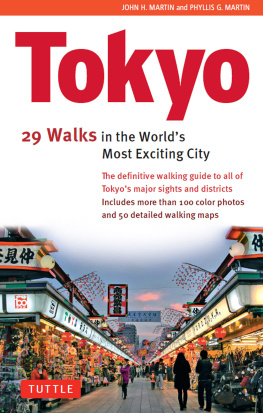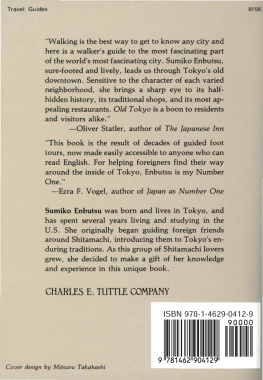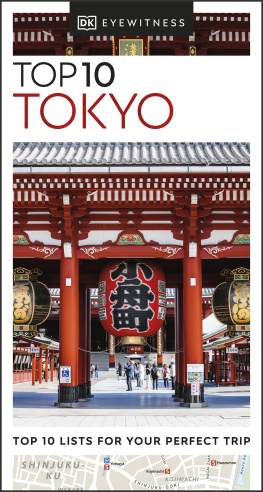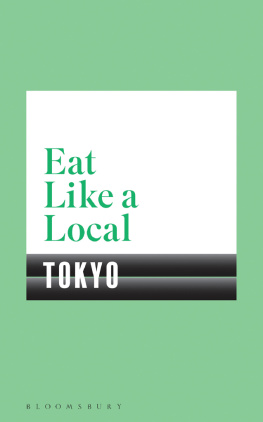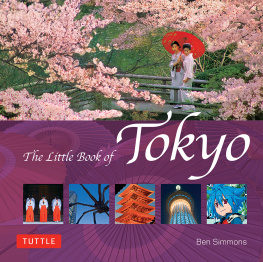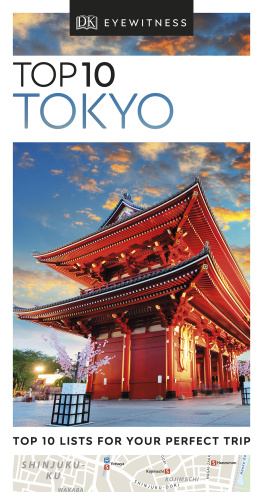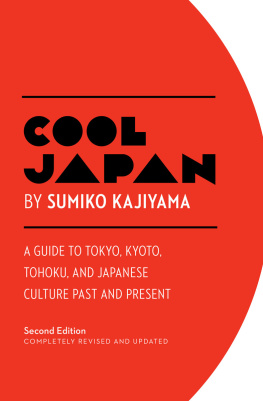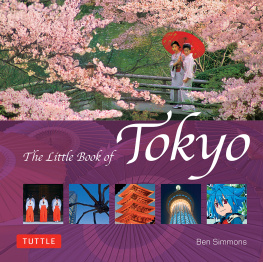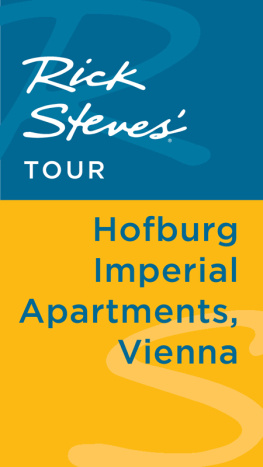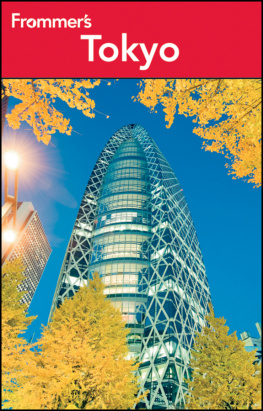Tokyo General Information
GETTING TO TOKYO
There are various international airports in Japan for arrivals from overseas, the main terminals being: Narita for Tokyo, Nagoya for central Japan, and Osaka for the rest of Japan. With a new international terminal having opened in October 2010, Haneda Airport 30 minutes from Shinagawa in Tokyo, is also gradually increasing its number of international routes. There are airports in Sapporo, Fukuoka, Nagasaki, and many other cities too, but these are generally not arrival points from outside of Asia. If arriving at an airport other than Narita or Haneda, it is possible to use the train network or one of the numerous domestic flight routes to get to Tokyo after clearing immigration and customs. At Narita, foreign currency can be changed at counters just beyond the customs area or in the lobby outside of the customs area. You can also you overseas ATM cards at most larger post offices in Tokyo and at many banks and even convenience stores.
TRANSPORTATION FROM NARITA INTO THE CITY
Narita Airport is approximately one hour from Tokyo. Tickets for limousine buses can be obtained in the lobby just outside the customs area and the buses depart from the curb outside the lobby almost every 10 minutes. In approximately one hour, depending upon traffic, the bus goes to the Tokyo City Air Terminal (TCAT) where a taxi can be taken to ones hotel. Some limousines go directly to individual hotels in Tokyo, and information as to the limousine desired can be obtained at the ticket counter. Trains to central Tokyo depart from the basement level of the airport and train tickets can be obtained there. The Keisei trains go to Ueno Station while the Japan Rail trains go to Tokyo Central Station. In either case, a taxi or trains can be taken from the Tokyo stations to ones hotel.
TRANSPORTATION WITHIN TOKYO
Within Tokyo one has a choice of taxis, trains, subways, and buses. Since not all buses indicate their route or destination in English on their front, the use of subways, trains or taxis is recommended.
Taxis: Taxis can be hailed on the street, and taxi doors are opened automatically by the driver for entry or departure from the vehicle. Taxis are metered, and the drivers do not expect a tip. Not all taxi drivers speak English, and if you do not know the Japanese name of your destination, its best to have the front desk at your hotel write your destination on a piece of paper that you can give to the taxi driver.
Subways: There are two subway systems in Tokyo: Tokyo Metro and Toei, both with various branches. Tickets are purchased from vending machines in the subway station lobbies, and a signboard usually indicates the cost of a ticket to specific stations. The ticket is placed in the slot at the turnstile, and it is then returned through another slot. The ticket must be retained for use to exit the turnstile at your destination. On leaving the station of your destination, the ticket is again deposited into the turnstile. If the correct amount has been paid, the barrier to exiting is activated and the ticket is not returned on departure. If the fare for the ticket was for less than is required, the guard can be paid the difference needed, or you can use one of the fare adjustment machines always situated just inside the ticket gates. If in doubt as to the cost of your ride, choose the least expensive ticket and then pay the difference to the guard at the exit of your destination. If you are staying in Tokyo for a length of time, it might be easier to buy an electronic Pasmo or Suica pass, which can be charged with as much money as you see fit and then swiped against scanners on the ticket gates upon entering and leaving a station to automatically deduct the fare. Pasmo (issued by Tokyo Metro) and Suica (issued JR) can be used on any Toei, JR, or Metro line, and even on many bus routes. They can also be used on many drinks vending machines and in some shops.
Trains within Tokyo: The heart of Tokyo is circled by the JR Yamanote Line, part of the Japan Rail system. There are other JR lines that serve parts of the city: the yellow Sobu Line, the orange Chuo Line and the blue Keihin Tohoku Line. As with the subway system, tickets must be purchased from vending machines, and the same instructions as to the use of tickets (or Pasmo and Suica) applies as described under the Subway entry above.
Maps and General Information: Maps of t he city, information on sights and events, and maps of the transportation lines in the city can be obtained from your hotel or from the Tourist Information Office in Tokyo, which is located one-minute from the Nihombashi exit of Tokyo Station. They also have a Web site: www.tictokyo.jp/en/
SHOPPING
Tokyo has shops to suit almost every taste and budget, from high-end fashion boutiques and department stores to shops dealing in traditional crafts and all manner of quirky souvenirs. Harajuku and Shibuya cater to the young, trendy set and are where youll find the latest in teen fashions and trends. More conservative is Ginza, still Tokyos premier shopping district, which is home to the Mitsukoshi, Matsuya, Wako, Matsuzakaya, and Printemps department stores as well as flagship stores for such international brands as Luis Vuiton, Chanel, and Cartier.
Equally fashionable, but with a more contemporary feel, are Aoyama and Omotesando, home to numerous famous brands, tiny back-street boutiques, and the chic Omotesando Hills shopping mall. Shinjuku and Ikebukuro too have plenty of shopping options, with giant department stores, home electronics, the latest fashions, and almost everything else in between to be found along their crowded streets.
In Akihabara the focus is on home electronics and gadgetry, and besides the numerous small specialty stores youll find many large duty-free stores offering discounts on the latest tech. Akihabara also caters to Japans otaku (geeks) and is awash with manga- and anime-related stores.
For souvenirs, the area along and around Nakamise-dori in Asakusa is rife with small stalls selling cheap T-shirts and plastic samurai swords, but among all that are also good places to pick up edible souvenirs such as rice crackers and sweet ningyo-yaki , as well as traditional craft ware that includes exquisite Kiriko glassware. Youll also find similar on Omotesando at Oriental Bazaar, a three-story shop aimed at tourists, where the items range from expensive antique furniture and used kimono to sushi-shaped USB sticks.
EATING OUT
With its vast range of cuisines and number of high-quality, yet usually affordable restaurants, Tokyo is a gourmands dream. Sushi, the food most associated with Japan, doesnt get much better than in Tsukiji, where the early-morning and lunchtime sushi bars offer high-quality fare at good prices. In nearby Ginza, youll also find fine sushi restaurants, as well as upmarket restaurants specializing in other traditional cuisines, such as tempura, teppanyaki , and kaiseki-ryori .
Cosmopolitan areas such as Roppongi, Omotesando, and Aoyama have no shortage of great places to eat and drink, with options ranging from traditional Japanese to fashionable modern Japanese fusion to cool European and Asian restaurants.
Representing what the Japanese call B-grade gourmetaffordable, no-frills but tasty fareare dishes such as ramen, yakitori , and gyudon (beef bowl). Youll find these all over the city, but for the best range of ramen head to Yokohama and its Ramen Museum, a collection of ramen shops representing regional variations from around the country. For good yakitori try the restaurants under the elevated rail tracks between Yurakucho and Shimbashi Stations, or the back streets near Rokku Broadway and Hanayashiki Amusement Park in Asakusa.
The Okubo and Shin-okubo areas of Shinjuku Ward (near Kabuki-cho) are known for their Asian restaurants, especially those specializing in Korean barbecue ( yakiniku ) and Southeast Asian cuisines. Yokohamas Chinatown is not surprisingly the place to go for a good variety of Chinese flavors.

